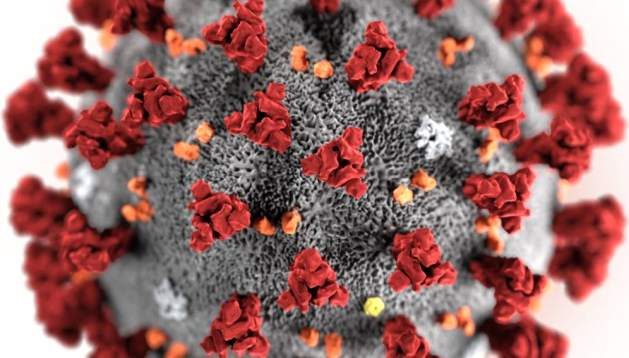
Apr 13 2020 (IPS) – In the second week of March the World Health Organisation (WHO) declared COVID-19 . By mid-March the disease had spread rapidly in many countries around the world.
Governments are taking drastic steps, including the complete lockdown of cities, as well as extensive health interventions to try and stem the disease which is caused by a new coronavirus called SARS-CoV-2.
There is still a great deal that’s not known about SARS-CoV-2. This limited scientific information has contributed to a . Some claims being made are harmless. Others can be potentially dangerous.
We have identified nine misconceptions doing the rounds on social media in Africa and set out to counter them. The purpose of debunking these myths is to provide people with trusted information. And to provide people with valid scientifically backed answers which they can share on social media to counter the misinformation and disinformation out there.
Myth 1: SARS-CoV-2 does not affect Africans
Across the continent rumours have been rife that the virus does . This was fuelled partly by the fact that a Cameroonian student in China, who was among the first people to contract the disease, responded well to treatment.
But there is that melanin protects black people from the coronavirus. There is also no scientific evidence that African blood composition Africans from contracting the coronavirus.
This misinformation persisted even after the deaths of high-profile black Africans, such as legendary Cameroonian musician , and Zimbabwean media personality .
This myth is not limited to Africa. Twitter has recently been of African-Americans being immune to coronavirus.
Myth 2: SARS-CoV-2 cannot survive in Africa’s warm climate
This myth arose after research, which hadn’t been peer reviewed, pointed to temperature having a role in the survival of the virus. One of the most widely quoted sources was John Nicholls, a pathology professor at Hong Kong university who “in cold environments, there is longer virus survival than warm ones”.
This claim, however, was not based on verified research. It was nevertheless seized on as proof that the virus cannot thrive in Africa’s .
According to the WHO, the virus can be transmitted to all areas, .
The only continent that has no cases of COVID-19 is . This could change.
Myth 3: Spray alcohol and chlorine all over your body
Using hand sanitisers that contain 60% or more of alcohol has been found . But, there has been a myth that and chlorine will kill the virus.
Alcohol and chlorine if it has entered the body already.
Spraying alcohol all over your body can be harmful, particularly to your eyes and mouth. Importantly, the alcohol in the sanitiser is not the same as the alcohol that people drink. The latter ranges up to 40% while hand sanitisers need to be 60% and above.
Myth 4: Drink black tea first thing in the morning
The media in Kenya have been reporting on false claims that first thing in the morning is effective against the COVID-19 disease.
This is untrue. There is to suggest that tea can protect a person from the virus. These claims can result in a sense of false security and can be dangerous.
Coronavirus can be prevented by maintaining a safe social distance and .
Myth 5: Pepper soup with lime or lemon flushes out the virus
The myth has been circulating mostly in .
Pepper has anti-oxidant, detoxification and antimicrobial properties. But, there is no evidence that it prevents or kills SARS-CoV-2. It is also a rich source of vitamin C, which helps .
Likewise, lemon and lime also contain high amounts of vitamin C. But there is no evidence to support the claim that they flush the virus out of an infected person’s system.
Myth 6: Steam your face with and inhale neem tree leaves
There have been claims, , that steam therapy with neem can prevent COVID-19. What we know is that according to ayurvedic medicine experts, in strengthening the immune system and prevent viral infections.
Neem is known to exhibit immunomodulatory, anti-inflammatory, antihyperglycaemic, anti-oxidant and . But, the Centres for Disease Control and Prevention has emphasised that there is to suggest that steaming and inhaling with neem will prevent coronavirus.
Myth 7: Vitamin C tablets prevent COVID-19
Vitamin C is a . It prevents damage to tissue in the body by neutralising free radicals, which are charged particles that cause damage to cells and tissues and result in inflammation. Vitamin C is also known to protect against pathogens.
But there is that vitamin C can prevent one from contracting COVID-19 though there are trials being undertaken on the use of vitamin C among COVID-19 patient. None has .
Myth 8: Having had malaria makes one immune
There have been several social media posts that suggest that of acquiring new coronavirus cases.
There is .
Malaria – which is caused by a parasite and is transmitted from the bite of an infected Anopheles mosquito to humans – used to be treated with the drugs chloroquine and hydroxychloroquine. These have been used, respectively, as an anti-malarial and as an auto-immune disease drug for inflammation.
The over-hyping of chloroquine has led to worldwide shortages and resulted in people self-medicating. Experts have warned that .
Myth 9: The flu injection will protect you
The fact that health practitioners , might have led to the mistaken view that the flu shot protects against the new coronavirus.
No, it does not. The flu vaccine is – and even then against only some flu viruses.
Humans have been known to be affected by six coronaviruses, . The other two were the severe acute respiratory syndrome coronavirus (SARS-CoV) and Middle East respiratory syndrome coronavirus (MERS-CoV) in 2002 and 2012, respectively.
Now there is a coronavirus, .
There is no scientific evidence that a flu shot can protect people against coronaviruses.![]()
, Lecturer, Department of Pharmacy and Pharmacology, and , Associate Professor,
This article is republished from under a Creative Commons license. Read the .